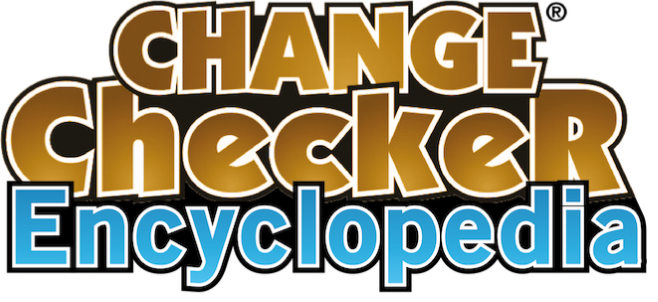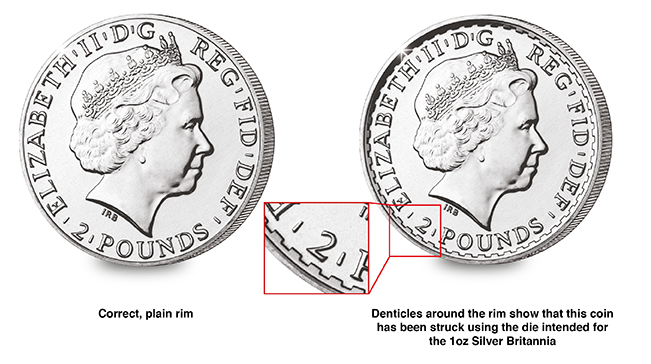Posts Tagged ‘collection’
£1 Coin Minting Error ‘Confirmed’
Rumours of the Dual-Dated £1 Coin appear to have been confirmed in the national press today.
Although we haven’t seen the coin ourselves, we’ve spoken to the collector claiming to be in possession of one and seen a number of images, leading us to believe that he has found a genuine error.
The error in question is a 12-sided £1 coin with two different dates – 2016 on the obverse and 2017 micro engraved on the reverse.

The Dual-Dated £1 feature the dates 2016 on the obverse and 2017 on the reverse
So, what everybody wants to know is, “what is this coin worth?”
At this stage it’s difficult to answer with any certainty. The error is very hard to spot with the naked eye and there is currently no indication as to how many of these error coins have been struck.
Probably the best example to compare it to is the 2008 undated 20p where there was an initial spike in interest and some coins sold for an inflated price in the thousands. However, this did settle down fairly quickly and today you’d expect to pick one of these up for between £50-75.
What is clear, is that this appears to be a genuine error and as such considerably more collectable than many of the mis-strikes and tampered with £1 coins that have recently appeared online.
Have you found a Dual-Dated £1 coin?
[polldaddy poll=9764255]
What the people of Bath think of the new Jane Austen £2 Coin
To mark the new Jane Austen £2 coin being released to collectors as an individual coin, Yasmin and I went to Bath, home to Jane Austen, to see what people of Bath think of the new coin.
And they loved it. Watch their responses below…
[youtube https://www.youtube.com/watch?v=ApZRIf2Med8&w=560&h=315&rel=0]
The coin, designed by Dominique Evans, features a silhouette of Austen and the dates 1817-2017 both overlapped with Jane’s signature. The gold outer features regency stripes, synonymous with the era in which she wrote her novels.

Jane Austen is one of the world’s best loved novelists and over the years her books have grown into a global phenomenon. Her novels have been translated into more than 40 languages with dozens of popular film and television adaptions making her widely recognised and adored.
2017 Jane Austen Brilliant Uncirculated £2 Coin
Change Checker Encyclopedia – Coin terminology made easy!
 The thing we love about coin collecting is that anybody can do it…but, we’re aware that to those who are not seasoned collectors, some of the terminology can be a bit daunting. So we decided to draw up a go-to terminology list, the Change Checker Encyclopedia, to ensure you never confuse your ‘base metal’ from your ‘bi-metallic’ again!
The thing we love about coin collecting is that anybody can do it…but, we’re aware that to those who are not seasoned collectors, some of the terminology can be a bit daunting. So we decided to draw up a go-to terminology list, the Change Checker Encyclopedia, to ensure you never confuse your ‘base metal’ from your ‘bi-metallic’ again!
Face Value
The face value of coins is usually its legal value. However, their market value usually doesn’t bear any relationship to the face value as collectors pay close attention to the coin’s metal content, finish and rarity.
Obverse
This is the side of the coin which features the monarch’s head- hence “Heads”
Reverse
This is the opposite side of the coin to the monarch’s head and commonly referred to as “tails”. This will usually feature an emblem or another design.
Circulated
These are the coins that you find in your change. As they’ve been circulated among the population they’re likely to show some wear and tear.
Uncirculated
A coin in a new condition fresh from the Mint originally intended for circulation but not circulated. Usually they have some small scratches and marks.
Brilliant Uncirculated
These coins are struck to a superior finish and don’t have the scratched or blemishes you’ll find on the coins in your change.
Proof
‘Proof’ refers to the finish of a coin and is often a favourite amongst collectors. Proof coins are struck several times with special highly polished dies and usually have a mirror lustre finish, with frosted relief.
Blank
This is a disc-shaped piece of metal onto which a coin image is struck or pressed
Base Metal
This is a common and inexpensive metal, usually either Cupro-Nickel or Nickel Brass, used to produced coins for circulation.
Milled Coin
This is any coin that has been struck in a coining press.
Die
This is a block of hardened metal that has a design or effigy engraved on to it. It is used to impress the design onto a coin blank.
Strike
This is the final stage of the coin making process where an image is pressed (using huge force created by two dies) onto both sides of a coin blank.
Bi-Metallic
A coin made from the combination of 2 metals or alloys, our £2 and the new 12-sided £1 coin are good examples.
Mis-Strike
The striking process is never fully exempt from human error and sometimes a coin can become mis-aligned during the striking process, making it a mis-strike.
Error
Genuine errors, such as the undated 20p and ‘silver’ 2p are extremely rare. If you think you’ve found one you can send an image to [email protected] and we would be happy to take a look.
Mule
A mule coin is struck with an obverse and reverse that is not meant to be paired, such as this 2014 ‘Year of the Horse’ coin.
The wrong obverse (Queen’s head) die was selected when the coin was struck, leaving just 17,000 of the several hundred thousand mintage with the incorrect finish around the edge of the coin. No-one noticed until it was too late and the coins had already been released to bullion dealers.

Mintage Figures
Simply speaking the mintage figure is the total quantity of a specific coin that has been struck. This can be higher than the ‘edition limit’ depending on how the coin is offered. Mintage figures are only one of the guides to the collectability of coins as over time coins will be withdrawn from circulation due to damage, they may get lost or be retained by collectors.
Mint
This refers to any organisation authorised to strike coins and medals. The British Royal Mint is one of the oldest and most respected in the world dating back to the 7th century.










